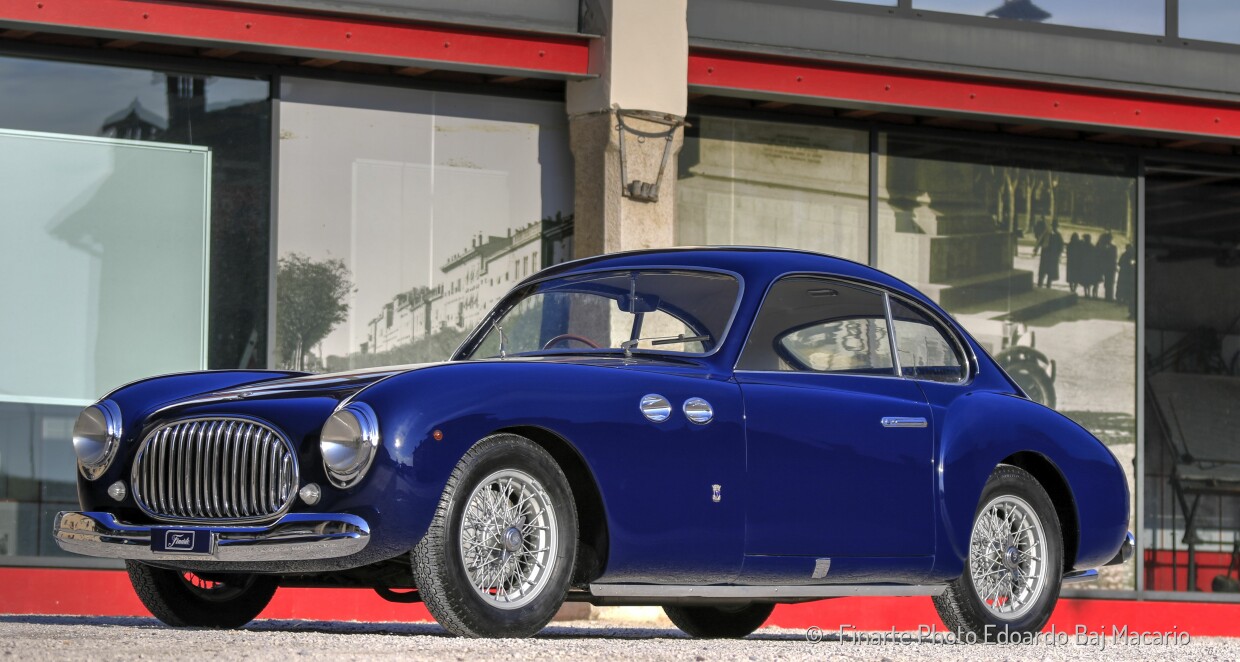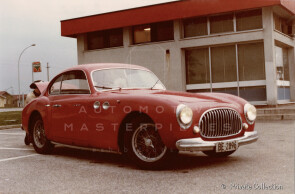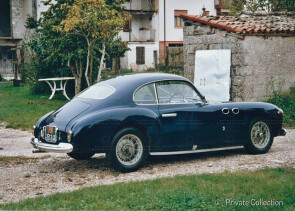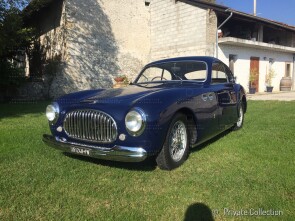
1950 Cisitalia 202 B
ON/OFF
Why am I an Automotive Masterpiece?
K. Famous chassis’ cars
Last chassis of the model B.
L. Limited edition cars
no. 40 manufactured. model 202 B
Founded in 1939 by Turinese texile industrialist Piero Dusio to manufacture sports equipment, Consorzio Industriale Sportiva Italia (Cisitalia) amassed a fortune for its former soccer star owner making military uniforms during WW2. An experienced amateur driver, Dusio used his fortune to become involved with the sport he loved. After winning his class on the 1937 Mille Miglia, he began to explore the possibilities of building his own racing cars. Cisitalia's first model was the D46 appeared in 1946, a small single seater which used a tubular steel space-frame chassis crafted at Cisitalia’s bicycle factory to support readily-available Fiat mechanicals as Fiat 1090cc engine and Fiat 500 suspension. After fifty D46s were sold and the model archived a debut victory in the Coppa Brezzi in Turin, Cisitalia focused on building small passenger car based on the D46, including it's Fiat components and space frame chassis. In the summer of 1946, the 202 CMM (Coupé Mille Miglia) was initially designed by Dante Giacosa and continued by Giovanni Savonuzzi (hired by Dusio in August 1945). The first coupé was built by Alfredo Vignale, at the time the departmental head of Stabilimenti Farina and allowed him to set up his own carrozzeria. The Cisitalia 202 SMM (Spyder Mille Miglia) was derived directly from the coupé. After Nuvolari epic effort, subsequent competition spiders were known as 202 SMM Nuvolaris. Savonuzzi’s design, was submitted to Battista Pinin Farina as an initial concept for the new coupé 202 Gran Sport and inspired the master to create one of the most significant examples of body styling in automotive history. Cisitalia provided Pinin Farina with the chassis on which the Cisitalia's body was placed. The body was more or less handcrafted, with its aluminum panels shaped over wooden forms. Its shapes are the finishing point of all the previous research: the hood, body, fenders, and headlights are integral to the continuously flowing surface, rather than added on, creating a general sense of beaty and speed. Unveiled in 1947 at the exhibition of Coachbuilders at the Milan Triennale and Paris Motor Show, it won the Coppa d’Oro prize at the Villa d’Este Concours d’Elegance. The Cisitalia 202 Gran Sport was defined as “a rolling sculpture” in 1951 when it was chosen, along with seven other cars, for an exhibition at the Museum of Modern Art in New York (MoMA). The 202 is the progenitor of all modern sports cars stands as a timeless bridge between pre- and post-war sports car design. Its lines had a strong impact on the aesthetics of car design at the time, breaking with tradition and introducing new concepts in style. Coupé versions of the 202 were the first produced. A cabriolet followed. The 202 were built around low-cost Fiat components including a redesigning chassis and a 1089cc four-cylinder engine delivering 66 horsepower. The first Gran Sport model has only two seats and is the first car in history to have the brand name even in the back. The first development, the 202 Berlinetta - or B - can instead accommodate four people (three in front and one, bad, behind) and is distinguished by its more massive grille and chrome bumpers. The 1951 202 C has the the trunk accessible from outside and the rear window wider. The early 202 grill was aluminum and had 23 individual teeth shaped like a "D" with the curved part facing forward, and a narrow surround. The later 202 had a chrome plated grill with 18 thicker teeth and a thicker surround. The twin windscreen was later replaced with a one-piece curved windscreen. The 202 body production by Pinin Farina soon shifted over to Stabilimenti Farina and, to a lesser extent, Vignale. Both built the 202 to Battista Pinin Farina's original design, although there are some differences. It was expensive, and only 170 were produced between 1947 and 1952, 153 coupes and 17 cabriolets.
This 1950 Cisitalia 202 with the body by Stabilimenti Farina, chassis no. 156 SC, is an example of the B version, different from the previous “Gran Sport” model for the additional rear seat and other details. This car is believed to be the last example built of the 202 B version, already featuring the enlarged rear hatch for the boot, which had replaced the small spare tire hatch, starting with chassis no. 143; production of the 202 C version is believed to start after this chassis no. 156. It is a 100% Italian car, as it has travelled from owner to owner all over the Italian peninsula: registered in Milano, it later passed to Roma, Isola d’Elba, Piombino, Gorizia, again Milano and, finally, Pordenone where it remained in the same collection for 40 years. For over 40 years Adriano Cimarosti has been its attentive owner and caretaker. He was sports editor of Automobile Revue, the oldest automobile magazine in Europe. Cimarosti lived and followed all the golden period of the Grand Prix, from the beginning of the sixties onwards. He is also well known as the authoritative author of books on motorsport history. He has been indeed the perfect owner of a car that made the story of Sports cars. Cimarosti traced the car in the 1970s, thanks to a report by Nino Balestra, the famous automotive expert and a great connoisseur of the Cisitalia brand, author of many books. Some of them, of course, dedicated to the Cisitalia history. Together with Balestra, Cimarosti went to Milan and bought chassis no. 156 SC. Utmost importantly: it was again Balestra who brought his experience and gave tips for the restoration of the car. Although the owner lives in Switzerland, he always preferred to keep the car in the family home in northern Italy, to preserve the old Italian license plates.




